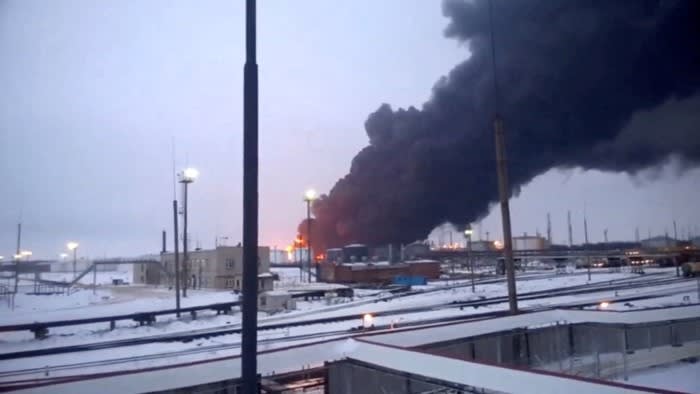Stay informed with free updates
Simply sign up to the War in Ukraine myFT Digest — delivered directly to your inbox.
The US has urged Ukraine to halt attacks on Russia’s energy infrastructure, warning that the drone strikes risk driving up global oil prices and provoking retaliation, according to three people familiar with the discussions.
The repeated warnings from Washington were delivered to senior officials at Ukraine’s state security service, the SBU, and its military intelligence directorate, known as the GUR, the people told the Financial Times.
Both intelligence units have steadily expanded their own drone programmes to strike Russian targets on land, sea and in the air since the start of the Kremlin’s full-scale invasion in February 2022.
One person said that the White House had grown increasingly frustrated by brazen Ukrainian drone attacks that have struck oil refineries, terminals, depots and storage facilities across western Russia, hurting its oil production capacity.
Russia remains one of the world’s most important energy exporters despite western sanctions on its oil and gas sector. Oil prices have risen about 15 per cent this year, to $85 a barrel, pushing up fuel costs just as US President Joe Biden begins his campaign for re-election.
Washington is also concerned that if Ukraine keeps hitting Russian facilities, including many that are hundreds of miles from the border, Russia could retaliate by lashing out at energy infrastructure relied on by the west.
This includes the CPC pipeline carrying oil from Kazakhstan through Russia to the global market. Western companies including ExxonMobil and Chevron use the pipeline, which Moscow briefly shut in 2022.
“We do not encourage or enable attacks inside of Russia,” an NSC spokesperson said. The CIA declined to comment. In Kyiv, a spokesperson for the SBU declined to comment. Officials at GUR and Zelenskyy’s office did not respond to requests for comment.
After the Financial Times published news of the US warnings on Friday Olha Stefanishyna, Ukraine’s deputy prime minister for European and Euro-Atlantic integration, was asked how Kyiv had responded to the Biden administration’s appeals to stop attacks on Russian refineries.
She said: “The Ukrainian side responded, I think, precisely by achieving its goals and by very successful operations conducted on the territory of the Russian Federation.”
“We understand the appeals of our American partners,” Stefanishyna told an audience at the Kyiv Security Forum. “At the same time, we are fighting with the capabilities, resources and practices that we have today.”

Ukraine has stepped up its air attacks in recent weeks, as its drone programmes expand and the ground war shifts in Moscow’s favour. It also follows growing discontent in Kyiv over what is seen as the west’s ambivalent approach to curbing Moscow’s energy revenues.
There have been at least 12 attacks on major Russian refineries since 2022, and at least nine this year, along with several terminals, depots and storage facilities, according to a military intelligence official in Kyiv.
Helima Croft, a former CIA analyst now at RBC Capital Markets, recently noted that Ukraine had shown it could strike most of the oil export infrastructure in western Russia, putting about 60 per cent of the country’s exports at risk.
The US objections come as Biden faces a tough re-election battle this year with petrol prices on the rise, increasing almost 15 per cent this year to around $3.50 a gallon.
“Nothing terrifies a sitting American president more than a surge in pump prices during an election year,” said Bob McNally, president of consultancy Rapidan Energy and a former White House energy adviser.
Ukraine has steadily increased drone strikes as its technologies have advanced. Ukrainian officials claim to have developed drones with a range in excess of 1,000km and payloads capable of inflicting severe damage.
Kyiv launched two of its largest and most widespread drone attacks last week, with operations by both the GUR and SBU successfully targeting seven Russian energy facilities in consecutive days.
Over the past year, GRU and SBU sea drones have also struck Russian ports, destroyed several Russian warships in the Black Sea and hit Moscow’s prized Crimea bridge connecting Russia to the occupied Ukrainian peninsula.
The aim of the “special operations” is to hamper the supply of fuel to Russia’s troops and cut funding for the Kremlin’s war effort, according to one Ukrainian official involved in planning and conducting the attacks.
Kyiv also wants to deliver a symbolic blow by bringing the war closer to Moscow and showing its air defences — including those around the Kremlin — can be penetrated.
The air campaign is also seen by some officials as a means to spur Washington into approving the $60bn military assistance package held up in Congress that is critical for Ukraine’s defence.
Also Read More: World News | Entertainment News | Celebrity News








